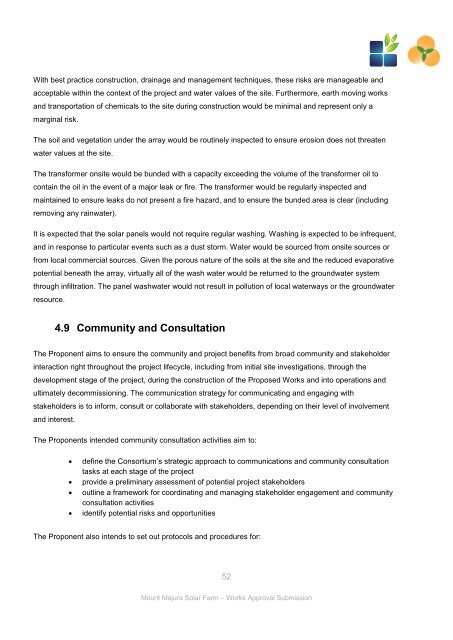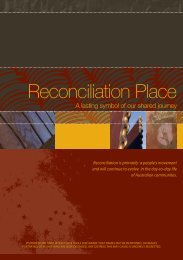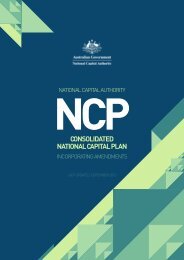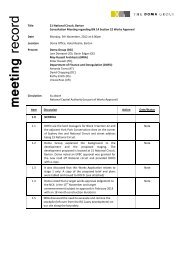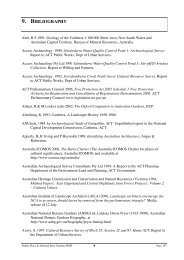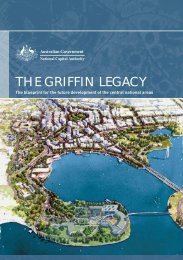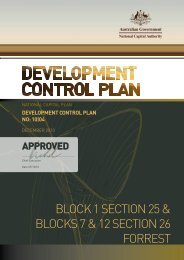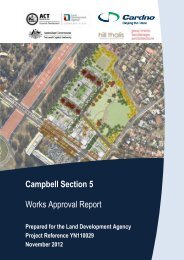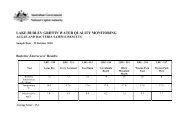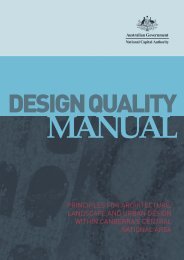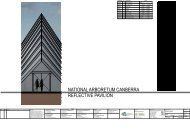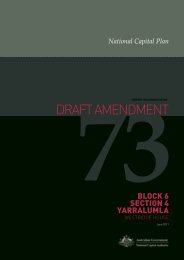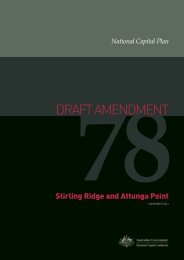Mount Majura Solar Farm - the National Capital Authority
Mount Majura Solar Farm - the National Capital Authority
Mount Majura Solar Farm - the National Capital Authority
- No tags were found...
You also want an ePaper? Increase the reach of your titles
YUMPU automatically turns print PDFs into web optimized ePapers that Google loves.
With best practice construction, drainage and management techniques, <strong>the</strong>se risks are manageable andacceptable within <strong>the</strong> context of <strong>the</strong> project and water values of <strong>the</strong> site. Fur<strong>the</strong>rmore, earth moving worksand transportation of chemicals to <strong>the</strong> site during construction would be minimal and represent only amarginal risk.The soil and vegetation under <strong>the</strong> array would be routinely inspected to ensure erosion does not threatenwater values at <strong>the</strong> site.The transformer onsite would be bunded with a capacity exceeding <strong>the</strong> volume of <strong>the</strong> transformer oil tocontain <strong>the</strong> oil in <strong>the</strong> event of a major leak or fire. The transformer would be regularly inspected andmaintained to ensure leaks do not present a fire hazard, and to ensure <strong>the</strong> bunded area is clear (includingremoving any rainwater).It is expected that <strong>the</strong> solar panels would not require regular washing. Washing is expected to be infrequent,and in response to particular events such as a dust storm. Water would be sourced from onsite sources orfrom local commercial sources. Given <strong>the</strong> porous nature of <strong>the</strong> soils at <strong>the</strong> site and <strong>the</strong> reduced evaporativepotential beneath <strong>the</strong> array, virtually all of <strong>the</strong> wash water would be returned to <strong>the</strong> groundwater systemthrough infiltration. The panel washwater would not result in pollution of local waterways or <strong>the</strong> groundwaterresource.4.9Community and ConsultationThe Proponent aims to ensure <strong>the</strong> community and project benefits from broad community and stakeholderinteraction right throughout <strong>the</strong> project lifecycle, including from initial site investigations, through <strong>the</strong>development stage of <strong>the</strong> project, during <strong>the</strong> construction of <strong>the</strong> Proposed Works and into operations andultimately decommissioning. The communication strategy for communicating and engaging withstakeholders is to inform, consult or collaborate with stakeholders, depending on <strong>the</strong>ir level of involvementand interest.The Proponents intended community consultation activities aim to:define <strong>the</strong> Consortium’s strategic approach to communications and community consultationtasks at each stage of <strong>the</strong> projectprovide a preliminary assessment of potential project stakeholdersoutline a framework for coordinating and managing stakeholder engagement and communityconsultation activitiesidentify potential risks and opportunitiesThe Proponent also intends to set out protocols and procedures for:52<strong>Mount</strong> <strong>Majura</strong> <strong>Solar</strong> <strong>Farm</strong> – Works Approval Submission


